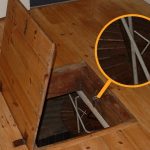Global Warming
Thanks to global warming, glaciers in the coldest part off the world are melting. Many of these glaciers have been frozen for hundreds of years, and the things that were in the area when the glaciers froze have been frozen in time. Now that the glaciers are beginning to melt, many things that have been hidden for decades, even centuries, are being revealed. In 2004, Maurizio Vicenzi was walked in the slopes of San Matteo, when he made a startling discovery of his own. As Glaciers on This Mountainside Melted, What Was Uncovered Will Chill You to Your Bones.
Maurizo Vincenzi
Maurizio knew the mountains very well because he worked on a local mountain rescue team. Maurizio is also an amateur historian and the director of a military history museum. He was out on the mountain one day when he used binoculars and saw what he believed to be a stain on the Forni Glacier. He decided to get a closer look to see what caused the stain. As he got closer, he discovered that what he was looking at wasn’t a strain. He saw three dead bodies dangling from a wall of ice.
The Find
When Maurizo discovered the bodies, he says that the discovery was essential to military scholars and for the people of Peio and the surrounding areas. Bodies haven’t been found in ice in that area for decades; therefore, Maurizo says that it was an important discovery from a historical point of view.
Peio
In the ’70s, Peio was a remote farming community in the Dolomite Mountains. Today, thanks to money coming in from tourists visiting Russia and Italy, it has blossomed into a modest ski resort. The mountains reach 11,000-feet and are home to ancient glaciers. While the geography of the mountains is significant, they also have a historical significance. Back in World War I, trenches were built for the soldiers to take cover during battle.
The Battles
Italy joined in the war on May 23, 1915, after signing the Treaty of London. It was a secret agreement that would bind the U.K., Russia, and France to Italy. The battle was called the White War, and it took place over 250 miles across the frozen mountains. Pedio struggled during the conflict because the people who lived there weren’t permitted to leave. The mayor, Algelo Dalpez, refused to allow the people in the village to be evacuated.
The Alpini vs. the Kaiserschutzen
War in the mountains is not easy. The Italians were more prepared for the battle because they had teams of specially trained mountain soldiers known as the Alpini. The Austrians had to prepare their force of fighters quickly, and they were known as the Kaiserschutzen. The troops who were brought into the White War were locals who had experience in the mountains. Many of them were friends, and some were fighting for opposite sides. Brothers and cousins were also on opposite sides of the battlefield. It wasn’t an easy time for anyone.
Little Known
Very little is known about what really happened up on the mountain. This is because very few reporters were willing to travel to the frontline. Now that the Alpine glaciers are melting, the bodies of the dead have become exposed. This has given forensic scientists and historians a chance to piece together what actually happened on the battlefield.
What the Excavations Have Revealed
Excavations in the area have revealed that both sides used complex military infrastructure due to the challenging conditions on the mountain. The soldiers would carve trenches and tunnels, they installed communication cables, and they built roads so that they could receive supplies. They even built a so-called ice city on the glacier. Over the years, historians and salvagers have discovered helmets, gas masks, guns, exploded shells, and grenades.
An Amazing Find On the Corno di Cavento Glacier
On the glacier, the Austro-Hungarian garrison was discovered by a local alpine club. While on the mountain, they found straw beds, a storeroom, and even a commander’s office. The site gave historians an idea of what the day to day life of a soldier fighting on the glacier looked like. As the glacier has retreated, many items were found, including soldiers’ uniforms, diaries, photos, sewing kits, playing cards, and unsent love letters.
The Dead
Before the war ended and the Austrian army was forced to surrender on November 3, 1918, around 150,000 soldiers died. The bodies discovered by Maurizo represent just a small fraction of the dead that has been recovered in the Alps over the years. Over 80 bodies have been found in the trenches and in the receding glaciers. Sadly, it is nearly impossible to identify them. The bodies found had been frozen in the ice for decades, and they were completely mummified. This makes it easy to collect DNA, but back then, the DNA database didn’t exist. It’s very sad what happened to these soldiers as their families likely wondered what had become of them.


